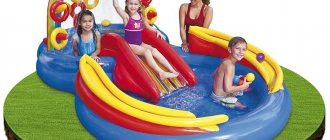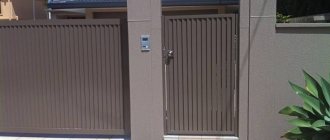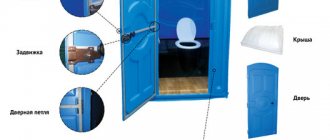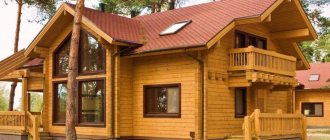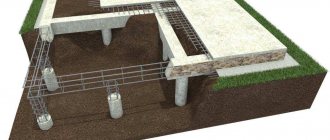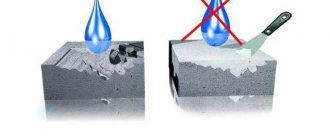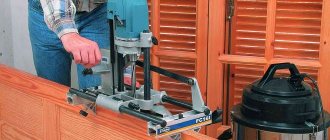The plots of most dachas do not exceed 6–12 acres. And even if the family has no desire for gardening, it is quite difficult to place a capital hydraulic structure in a small area with limited utilities. Therefore, owners of suburban acres often choose frame or inflatable ponds for recreation areas.
Inflatable structures are short-lived and unstable to mechanical stress. Frame structures differ from them in strength, ease of use, and last longer.
Let's consider how to choose the right frame pool, types, methods of installing reservoirs, their advantages and disadvantages.
Features of frame structures of swimming pools
Before buying an artificial pond, you need to determine which system will be most convenient in your conditions - all-season or installed only on weekends, portable or with a permanent location, etc.
For a child under 6–7 years old, a small inflatable pond is suitable for summer swimming. It can be installed or moved at any time, and the water in it will quickly warm up.
In other cases, a frame model is preferable. Let's figure out why.
Advantages and disadvantages
A frame pool for a summer residence differs favorably from an inflatable reservoir:
- Service life. If the operating rules are followed, the frame will last ten years or more.
- Resistant to temperature changes and mechanical effects of vinyl coating.
- The strength of the frame structure.
- Possibility of placement on the ground (for almost all models), permissibility of deepening (for frost-resistant options).
Compared to permanent structures, a frame swimming pool for a summer residence benefits from the following parameters:
- Installation time. Assembling a frame pool requires significantly less time than installing any other type.
- Variety of shapes. Bowls can be round, rectangular, square, oval, or figure eight.
- Possibility of moving the frame structure around the site.
- Easy to wash and pump out water. After the pump has finished working, the remaining liquid is easily poured out of the bowl.
- Wide range of sizes available.
But a frame pool for a summer residence also has disadvantages:
- Compared to concrete reservoirs, the service life is shorter.
- A site for installation of the structure is required for some models.
- If the hydraulic structure is not frost-resistant, then it must be dismantled every autumn, and the parts, equipment and bowl material must be stored in a room where a positive temperature is maintained.
general description
An in-ground pool is a swimming container, which can be of any size, previously dug into a hole in the ground.
The shape of the recess and size depend on the selected tank. Pools dug into the ground differ from other types in their ease of installation and assembly and do not require significant effort from the owners.
Bowls that are dug into the ground require separate functional and structural elements for water treatment and drainage. They allow you to quickly fill the container and drain water from it. These tanks are universal and suitable for use by both children and adults. They can be closed or open to sunlight.
Frame type
Structurally, portable frame-type reservoirs are divided into:
- rod;
- sectional or sheet.
The first ones are installed on a metal base - a frame consisting of vertical rods and a rim attached to them. A bowl made of two or three-layer reinforced material is put on and attached to the frame.
In the second case, the frame for the bowl is mounted from sections or flexible sheets made of plastic or metal. The parts are fastened together with locks or bolts. After which the PVC cover is stretched and attached to the frame.
Note that sectional (prefabricated) reservoirs are stronger, but also noticeably more expensive.
Seasonal and frost-resistant frame pools
For those who like to relax in the country, so-called all-season artificial reservoirs are produced not only in summer, but also in winter.
For such buildings:
- reinforced frame;
- The thickness of the bowl film has been increased.
Frost-resistant models can withstand exposure to low temperatures. Advantages of such frame pools for summer cottages:
- no need to disassemble for the winter;
- service life of at least 15 years;
- high structural strength;
- the possibility of deepening the reservoir into the ground.
But all-season models require careful preparation of the installation site, so they are more difficult to move around the site. Also, frost-resistant hydraulic structures must be carefully prepared for winter. The price for prefabricated all-season structures is noticeably higher than for lightweight models.
Seasonal frames are used only in the warm season. Before the onset of winter, such structures must be thoroughly washed and disassembled.
Summer pools are cheaper than frost-resistant ones, because a lightweight frame is made for them and the PVC film consists of two layers between which a polyester reinforcing mesh is laid, and not three, like all-season ones.
Introduction
A dacha is a place of relaxation from the bustle of the city. Every person strives to create comfortable conditions at his dacha. In the summer it’s so nice to plunge into cool water, but you don’t always want to go to a body of water, so swimming pools come to the rescue of people. There are many different types, differing in size, shape, material and price. Such an artificial pond in your garden will not only become your favorite place to relax, but will also be the center of attention of guests. Many people don’t have enough money and time, they don’t want to carry out huge construction work to build a stationary water feature, and they don’t have a suitable place, but they really want a comfortable place for swimming, then your option is a frost-resistant pool (especially for the outdoor version).
Method of installing a frame pool
According to this parameter, hydraulic structures are classified into:
- Ground. Placed on the ground surface. The most common option, which does not require serious preparation of the installation site.
- Recessed. Placed in a dug pit.
As a rule, ground-based structures are most common in the middle zone. For some of them, it is recommended to arrange a cushion under the bottom - pouring sand, concreting. More often than not, a well-compacted, level area and the special bedding included in the kit are sufficient.
The recessed option is used for frost-resistant or volumetric structures. This installation method is more expensive. Such a pool cannot be quickly moved to a new location. But it has its merits. The pond can be integrated into the landscape of the site, the sides can be beautifully decorated, and a full-fledged recreation area can be created.
Filling and draining
It remains to analyze the features of water supply and drainage. The hydraulic design of a swimming pool is, in general, the same as that of a bathtub: spout, overflow, drain. But due to the greater height of the water layer and, accordingly, its greater pressure, the latter is not the same as in an apartment. First, instead of a plug there is a sliding or rotary valve; The pressure of the water will drive the plug tightly into the socket. Outside on the drain there is a multi-turn shut-off valve; The ball valve here does not guarantee against water hammer. To release water, they first move the valve, and then open the valve, and nothing else. Do not install a siphon on the pool drain; it will burst under pressure. Outlet pipe to the sewer – from 60 mm in diameter.
Size and shape of frame pool
When determining the dimensions of a reservoir, you need to focus on 2 parameters:
- the size of the site on which the structure will be located;
- number of people swimming.
For small areas, it is preferable to choose compact models with a depth of up to one and a half meters, especially if it is expected that children will use it.
The shape is determined by the purpose of the reservoir - swimming, bathing. Most often, round bowls are found, but rectangular and oval models are also sold. There are structures in the shape of a figure eight.
The more complex the shape and the larger the volume of the hydraulic structure, the more expensive its cost.
Where to put a frame pool
The location of the reservoir must be selected very carefully. Please note:
- Distance from water source and drainage communications. The further away the utility lines, the more difficult and time-consuming it will be to fill and empty the bowl. You will need to purchase additional pipes or hoses.
- Presence of bushes and trees. Falling leaves will constantly pollute the water. And the high crowns of plants, blocking the structure from the sun, will not allow the pool to warm up.
- The levelness of the site, its slope. Manufacturers recommend that the height difference at the installation site of the frame be no more than five degrees.
- The surrounding landscape. It is desirable to have a free approach to the reservoir from any side. Then you won’t have to worry about children breaking the plants; you can install drink stands on any side. And it will be more convenient to wash the bowl.
Prefabricated version
Preparation and installation of the structure will not require special knowledge, nor the availability of special tools. However, during installation it is necessary to remember important conditions that are best observed.
You need to choose a location for the pool. It is better that it is not under trees and on the sunny side. The water will warm up well, and leaves falling from the trees will not pollute the water.
Do I need to dig the tank deeper into the ground?
It depends on the volume and shape of the frame structure. The larger the reservoir, the more difficult it will be to assemble the structure in the fall and install it in the spring.
As a rule, such hydraulic structures are divided into 3 categories:
- Lightweight frame structures of small volume (up to 500 liters), which are easy to install, move, and clean. Such models can be installed on a waterproof polymer film flooring laid directly on the ground.
- Durable mobile prefabricated structures with a volume of 500 - 3,000 liters. Under them you need to carefully level the surface of the ground or arrange a cushion. In the second case, the top layer of soil or turf is cut off, and the resulting pit is filled with sand to ground level. Then the polymer film is spread.
- Designs with a bowl of more than 3 thousand liters. If desired, you can deepen it a little. To do this, dig a pit to a third of the height of the bowl. The base under the pond is placed in the pit - a concrete substrate, geotextiles, sand and a polymer mat. But it is more convenient to install such pools on the surface. This makes it easier to collect them in the fall and install them in the spring. And it’s easier to clean a site of debris after winter than a pit.
Let's start construction
We have divided the process of building a concrete pool with your own hands into several steps. The result is a detailed guide that will help you do everything yourself.
Construction layout
Any big undertaking must begin with drawing up a plan. You need to draw a bowl on paper indicating its dimensions. The drawing also needs to reflect the location of the equipment and its connection to the pool and the electrical network.
Bowl drawing
Decide on the depth of the bowl. If it is intended exclusively for adults, then 2 meters is just right. If for children, then it all depends on their age and height. When installing a diving board, the depth must be at least 2.5 meters.
Planning is a serious and responsible matter. Under no circumstances should you rush. Do not start work until you are sure that your drawing is correct and specific.
Only after creating a detailed plan for this can work begin.
Digging a hole and preparing a pillow
The next step will be choosing a location, digging a pit and preparing a cushion for the foundation.
Pool pit
The place should initially be as level as possible. Electricity and water supply should also not cause problems for the future tank. Pay attention to these two points when choosing a location.
We clear the area of plants and large stones, and then begin digging a hole. You can do this yourself, but this approach will take a lot of time and effort. If possible, contact a team of private workers or even the services of an excavator. This will significantly speed up the process and bring you closer to finishing the job.
Pit requirements:
- The bottom of the pit is 20-30 centimeters lower than the bottom of the future pool;
- The walls of the pit with a margin of 15-20 in each direction from the walls of the concrete bowl;
- The side walls should have a slope of 6-7 degrees to the outside;
Compliance with these requirements simplifies the installation of the pool. If they are violated, you will either not be able to complete the work at all, or you will do it with big problems.
Next, we install all the pipes that will be supplied to the pool. A bottom drain and side nozzles are installed, and from them the pipes go up. It is advisable to cover the holes tightly with a rag or film to prevent dirt from getting in during construction work.
Filling the foundation with a pillow
After finally digging the hole, you need to prepare a cushion for the foundation. There is nothing complicated, you just need to pour the compounds in several layers and level them out. The first layer is 15-20 centimeters of sand. Next comes crushed stone 5-10 centimeters high.
It is recommended to make the first layer of cement mortar for the pillow. In small pools you can do without it.
We level each layer using a board with a level attached to it and compact it. If you are pouring cement, let it harden completely and only then proceed to further work.
The last layer is laid out with overlapping roofing felt or other waterproofing material. It will protect against external groundwater and leakage of the bowl itself.
Pouring the foundation
Now you need to install formwork from boards to fill the foundation of the tank. It is recommended to make the foundation slightly wider than the perimeter of the pool walls. This will give greater stability and durability to the structure.
The next step is to install reinforcement for the foundation. Rods with ribs with a diameter of 10-14 mm are used. The larger the area and depth of the tank, the thicker the reinforcement bars should be used. The mesh dimensions should be 20 by 20 centimeters.
Foundation reinforcement
The mesh of rods is installed in two layers. The first is located at a height of 5 centimeters above the pillow, and the second layer is 5 centimeters higher than the first. Thus, it turns out that our slab will be about 14-15 centimeters thick.
To accurately position the reinforcing layers at a height of 5 centimeters, use brick or wooden blocks. Professional installers have special stands in their arsenal.
At the site of erection of the side walls, the rods are bent vertically upward. Later we will tie reinforcement for the walls to them. This design is rigid and reliable.
To fill the base, you must first prepare a solution. To do this, you can order a special machine or do it yourself in a concrete mixer. But you need to work quickly so that your solution does not have time to harden while you are preparing a new batch.
It is recommended to work in pairs with an assistant. While one is preparing the solution, the other is pouring it, leveling it and checking for voids.
To prevent air voids from forming in the thickness of the foundation, you can use a vibration machine or an ordinary rod. The vibration installation works in accordance with the instructions, and you simply lower the stick into the solution that has not yet hardened and make circular movements. This will allow air to escape to the surface.
Fill the side walls of the bowl
First of all, you need to make reinforcement of the side walls. To do this, we tie the steel bars to those that were bent vertically upward at the base reinforcement.
The installation of walls should only begin when the foundation has completely hardened. How quickly will this happen? Depends on weather conditions and the composition of the solution itself. On average, this period is 1 week.
The thickness of the walls of a concrete pool and the number of tiers of reinforcement directly depends on the volume of the pool. For a pool of 4*4 meters with a depth of up to 1.5 meters, it is permissible to use one tier. The thickness of the walls is 10-15 centimeters. If the area and depth are larger, then at least 2 tiers of reinforcement are installed, and the wall thickness is at least 20 cm.
Next, the formwork for the walls is installed. Wooden boards, plywood or chipboard sheets are used for it. All of them must be impregnated with a moisture-repellent composition. The joints of wooden sheets must be covered with some material or sealed.
Formwork installed for pouring concrete into walls
Poured concrete will put a lot of pressure on the formwork. To avoid deformation or complete destruction of the structure, spacers are installed on both sides. Also, the formwork walls are nailed on top to small bars.
Formwork for steps and other pool shapes is also installed. Next, concrete is carefully but quickly poured into all walls at once.
Facing
After complete hardening, you can remove the formwork and begin waterproofing and lining the pool.
Applying pool waterproofing
For waterproofing, special compounds are applied by spraying or using a roller. Carefully work out the junction of the walls and the foundation, as well as uneven areas of the walls. Let the composition dry completely.
Next, we check the waterproofing by filling the pool and leaving it for a week. After this, the water level is measured. If it has changed significantly, then you need to find leaks and eliminate the deficiencies.
A slight change in water level may be due to normal evaporation of moisture.
For final cladding, tiles, mosaics or film are used. Which to choose? Depends on your budget, preferences and ease of use of the material.
Tank lining with mosaic
To install tiles and mosaics, use only high-quality glue that is not afraid of water. The seams also need to be treated with anti-funge compounds. This will significantly extend the life of the cladding and make it easier to maintain.
Frame pool equipment
The cost of an artificial reservoir depends not only on the reliability of the design, the thickness of the film of the bowl, but also on what is included in the set additionally.
To install and operate the pool you will need:
- polymer substrate - protective flooring under the bottom of the reservoir;
- a cover for the bowl to cover it during rain, strong wind or when you are away from the site;
- pump;
- devices for water filtration and pond cleaning;
- a ladder that allows you to safely enter the pool.
Instructions for assembling and maintaining the structure will also be useful.
The more modest the equipment of the frame model, the lower its price. But you still have to buy the missing accessories. Only choosing the appropriate modifications will be more difficult.
Why do you need a roof?
Both adults and children love to swim, especially if it is very hot outside. In addition, swimming in the fresh air is good for your health.
Clean water in the pool - leaves and other debris do not fall into it
A large reservoir at the dacha is a good supply of water, which will be useful during drought for watering the garden. This symbiosis is very beneficial.
Since watering must be regular, the water in the pool is changed frequently, so that it remains clean even without the use of filtration equipment. Only a minimum of chemicals will be required (you can learn about pool water purification from the article on our website).
Swimming pool in the country with a polycarbonate roof
Advantages of a canopy over a pool
What does a canopy do? After all, you can sunbathe in the open sun and not waste time and money on roof installation.
Let's note the advantages of using a roof for a pool:
- Any roof, even transparent, will partially reflect and dissipate heat, which solves this problem.
Swimming pool at the dacha under a roof on rails - The roof prevents leaves from tall trees growing nearby from getting into the pool. Also, birds will not shit in it and insects will not fly into it.
- If the pavilion above the pool is low and made in the form of a dome, it does not allow water to evaporate. Also, due to the reduced amount of ultraviolet radiation entering the water, the chlorine necessary for disinfection will not evaporate as actively.
The pool is completely closed from debris, although the owners will have to worry more about caring for the roof itself - Wind and rain will not interfere with swimming. Some pool covers eliminate these inconveniences and allow you to use the pool all the time.
- It happens that the canopy performs a purely camouflage role. For example, the neighbors have a two-story house from which the yard with a swimming pool can be seen at a glance. Those who do not want to expose themselves can hide behind a small, light roof.
Such a lightweight awning will protect the pool from blowing - A roofed pool can be combined with a greenhouse. This creates a unique humid atmosphere inside, which is necessary for some vegetables and fruits. For example, cucumbers in such conditions will grow incredibly quickly, and the fruits will be very juicy.
Swimming pool inside a greenhouse – combining business with pleasure - A greenhouse can be without plants. With such a roof, the water warms up faster and stays warm longer. This is convenient in regions where summers are not very hot.
Indoor swimming pool at the dacha made of polycarbonate - this height of the canopy will allow you to swim even if it is closed - Another plus is the unusual design that pleases the eye.
Disadvantages of using a roof over a pool
Of course, a canopy over a pool also has its disadvantages:
- Even a light frame roof will cost a lot, let alone profile telescopic sliding models installed on stationary pools.
However, it is worth considering that if the water in the pool gets dirty quickly, it will have to be changed frequently. Over the course of a season of operation, this can result in additional expenses of up to 10-15 thousand rubles, so the price of the roof will be gradually compensated. - The pavilion is installed mainly over stationary pools or powerful frame models. For temporary ones, this solution is not entirely suitable.
Canopy for a swimming pool at the dacha
- Installation of complex telescopic systems will require additional space, which may not be enough on site.
- If the pool itself remains clean, the roof above it will take all the “blows” and will have to be washed at least once a month, but it is better to do this more often and with the help of cleaning products.
This pool is made as an extension to the house
- If the roof above the pool is low, a greenhouse effect may be created underneath, making swimming less comfortable. Condensation will form on the roof, so it is worth providing good ventilation.
The photo shows how the owner covered his light frame pool at the dacha with an awning tent. An excellent, and most importantly, inexpensive solution that will not protect except from strong winds.
Swimming pool for a summer house with a roof - a ventilated awning is used
Installation of a frame pool: main steps
The standard algorithm for installing a reservoir consists of three steps:
- Preparing the base. For light seasonal structures, it is enough to clear the ground of sharp, hard objects - branches, stones, protruding plant roots, and spread a protective film.
For heavy and frost-resistant pools it is necessary:
- clean and mark the site;
- remove the turf, prepare a drainage pad;
- pour concrete screed (150–200 mm);
- strengthen the walls of the pit (with buried installation technology).
- Installation. To assemble a model with a rod frame, you need to: a) place metal vertical tubes in the pockets of the case; b) install horizontal parts of the frame; c) connect the parts together, passing them through special holes in the vinyl cover.
A sectional or sheet frame is also assembled from parts held together by locking joints or bolts. Sometimes the joints are treated with a sealing compound. Then the bowl is placed in it.
- Connecting equipment. It is important to follow the included instructions. Do not start the pump until water has filled. You need to check the presence of filters. They can be paper (cartridge) and are replaced at least twice a week. More durable sand cleaners are also sold. They contain quartz sand, which lasts 3–5 years. As a rule, filters are installed on self-priming pumps, which are insensitive to air entering the hydraulics and resistant to reagents.
Two ways to purify water in a frame pool
Pleasant and safe swimming in an open artificial reservoir is ensured by mechanical and (or) chemical means.
In the first case, one of the most effective means is to install filters. They are capable of capturing particles of 10 microns or more.
After the pool has not been used for some time, you can speed up water purification using a vacuum cleaner, which carefully removes plaque from the surfaces with a silicone disk, sucking up and passing contaminants through a filter, releasing water without foreign particles back into the pool.
The second method, without which it is impossible to maintain the cleanliness of a reservoir, is the use of disinfectants. These can be preparations based on chlorine or active oxygen. Moreover, chlorine-containing compounds retain their properties much longer and the range of their effects on microorganisms is much wider.
To apply chemicals, special dispenser floats are used.
Particularly thorough (shock) cleaning is required when preparing a reservoir for wintering.
Winter storage
After summer is over and you can no longer swim in the pool, it needs to be prepared for winter. Despite the fact that it is frost-resistant, it is necessary to take a number of measures to preserve it for the winter so that temperature changes do not destroy the structure. The main danger to the structure is in the soil, which when frozen puts pressure on the structure, which is why it is not necessary to completely drain the water from the pool. The principle of conservation of various types of frost-resistant pools (frame, plastic, metal) is similar and differs only in the presence of additional devices and accessories. Therefore, we will consider general conservation rules that apply to all species.

